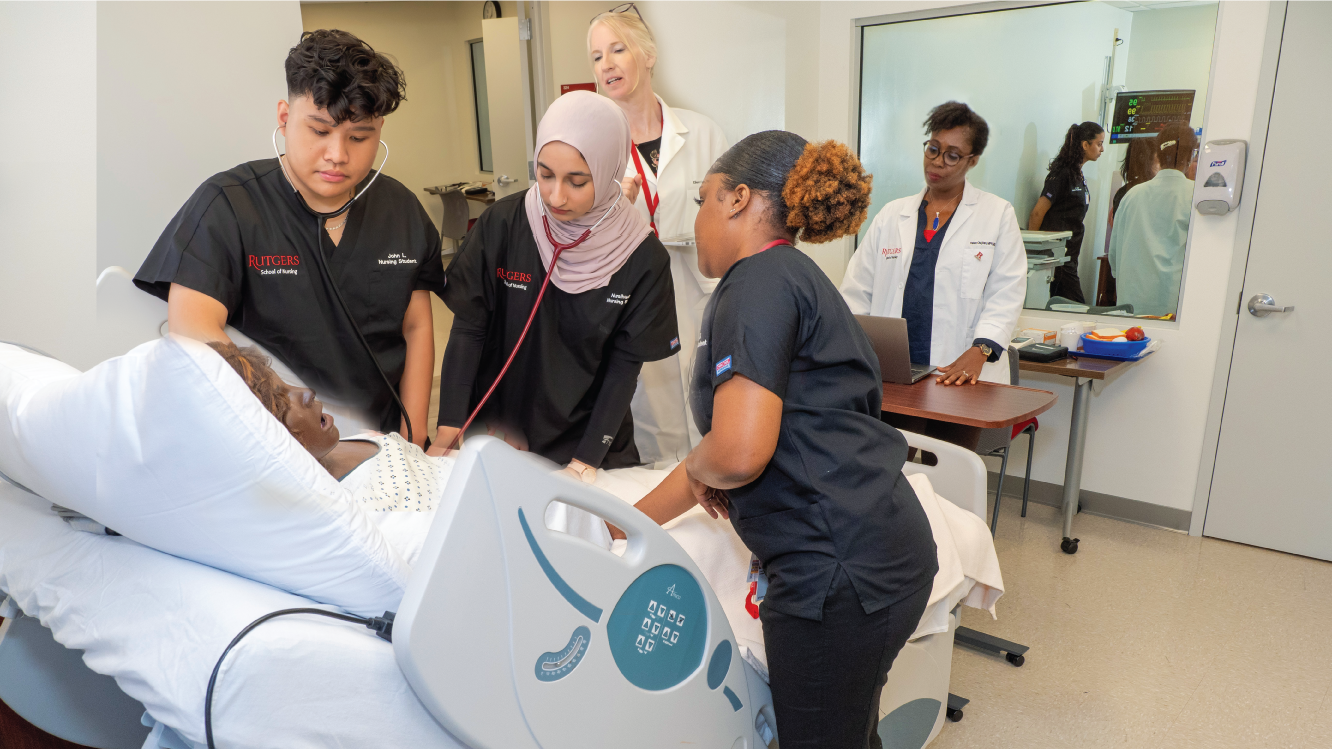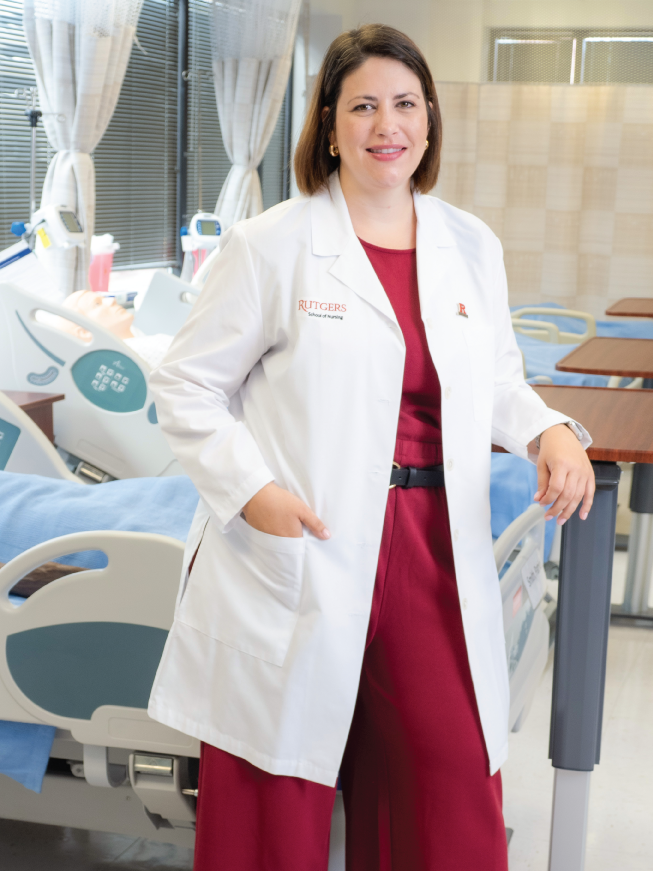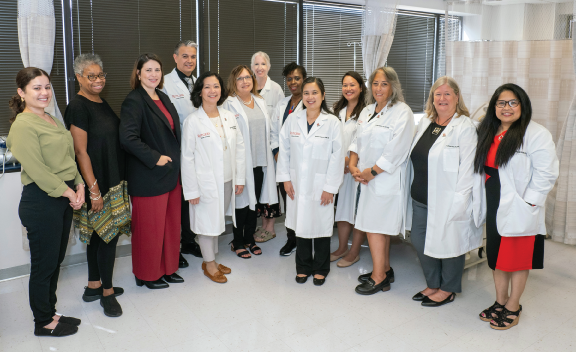
BY MERRY SUE BAUM
Rutgers School of Nursing is ramping up its clinical simulation program as 75 more undergraduate nursing students will be admitted each year. While it’s a small step, it will nevertheless help ease the current nursing shortage in New Jersey.
Christine Repsha, PhD, RN, FNP-BC, CHSE, assistant professor and the inaugural associate dean for simulation and clinical learning, says that a nearly $1 million grant from the federal Health Resources and Services Administration enabled the school to increase space in the simulation centers and purchase more high-fidelity manikins. “Clinical rotations are a requirement for graduation from the RN program,” she says. “That’s when students get actual patient care experience at hospitals or long-term care facilities. But these facilities only have a certain number of slots, and experiences with actual patients do not always encompass the skills that students must learn.”

The school has four simulations centers: two in Newark, one in New Brunswick, and one in Blackwood. The rooms in the centers are exact replicas of hospital rooms or doctors’ offices with all the latest technology. If necessary, they are easily changed to look like senior centers or other community facilities. The New Brunswick center, the first to be refurbished, was celebrated with a ribbon-cutting ceremony last summer. Upgrades and expansions are currently ongoing in the Newark centers.
The renovations are being overseen in part by Repsha, who came to the School of Nursing in July 2023. She has more than 10 years of experience and expertise directing clinical learning and simulation centers. She worked at Boston College’s Connell School of Nursing and the University of Massachusetts Lowell School of Nursing. She is a certified health care simulation educator and a research fellow with the International Nursing Association for Clinical Simulation in Learning. “I was quite impressed when I saw the program here,” she says. “I wanted to be a part of all that’s going on.”
The school’s simulation program also includes standardized patients or SPs, who are actors trained to portray various types of patients. They know the patients’ symptoms; medical, social, and family histories; and other pertinent information. The future nurses meet with the actors for specified amounts of time and complete the assignments they were given. High-tech cameras in each room video the entire encounter, so students can watch themselves in action.
In addition to SPs, the simulation program also uses state-of-the art manikins. They come in all sizes—from newborns to pregnant women who give birth—and they mimic the anatomy, physiology, and responses to treatment like that of human patients. There are a variety of models, including those that have vital signs, heart sounds, lung sounds, bowel sounds, and palpable pulses. Some can have seizures, sweat, or even bleed. The operator of the manikins is the voice of the “patient,” which enables students to practice autonomously but also get cues from the manikins to guide them to the objectives. For graduate students studying to become certified registered nurse anesthetists, there is a fully-equipped, state-of-the-art OR, where they can gain simulated expertise: intubating patients, administering general anesthesia, and inserting central-line catheters and epidurals.
The simulation labs include manikins portraying patients from diverse racial and ethnic backgrounds.
One reason Repsha took the job at Rutgers School of Nursing is because she hails from New Jersey and was happy to be coming home. Even more important, however, she’s excited to spearhead the growth of the simulation program. “We’ll be developing more complex, realistic and comprehensive scenarios,” she says. “And we’re planning to do more robust training for the SPs. Overall, Rutgers School of Nursing’s simulation center is really a wonderful place to be.”

